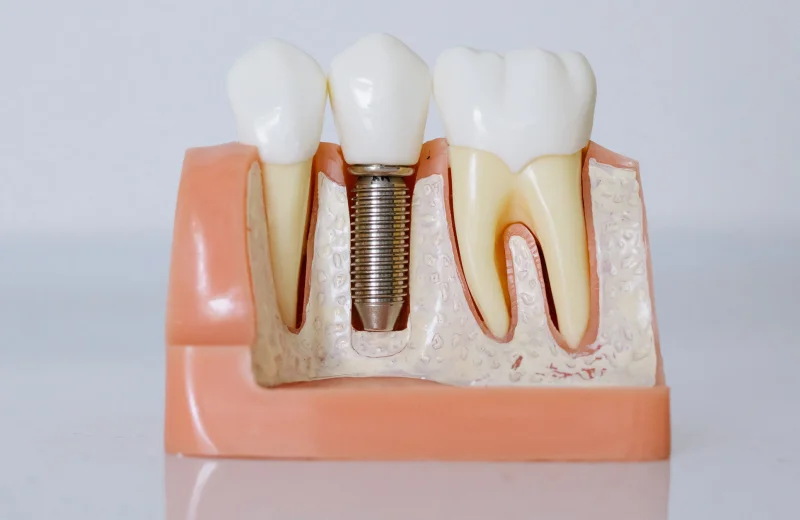Dental Implants
Dental implants are artificial roots made from various biocompatible materials. While they can come in different forms, the implants used today generally resemble a screw. They are placed into the jawbone through a surgical procedure under local anesthesia.
Unlike natural teeth, modern dental implants fuse directly to the jawbone (osseointegration). To allow for this fusion to occur, an average waiting period of 3-6 months is required after the surgical procedure. During this period, temporary prostheses can be provided to patients. However, in some cases, this may not be possible. After the implant-bone fusion is complete, suitable abutments are placed, and the fabrication of implant-supported prostheses begins.
IMPLANT-SUPPORTED REMOVABLE PROSTHESES
Implant-supported removable prostheses are used when fixed prostheses cannot be made, especially for patients who complain that their previous removable prostheses fall out and/or move.
Additionally, they can be an option for patients who may be candidates for fixed prostheses in the future but are currently unable to afford the cost of treatment. It is generally recommended to use at least two implants to support these prostheses.
While acrylic resin can be used as the base material for these prostheses, a metal base can also be used. Acrylic resin denture teeth are preferred to transmit less chewing force to the supporting tissues and implants. The prostheses are connected to the implants with certain retentive elements (attachments).
These are prostheses that can be removed by the patient. For the cleaning of the implant-attachment area and the prosthesis itself, they must be removed after meals, and hygiene requirements must be met using the technique recommended by the dentist. Like conventional removable prostheses (complete or removable partial dentures), it is recommended that they are not worn at night.
IMPLANT-SUPPORTED FIXED PROSTHESES
Implant-supported fixed prostheses are generally used in areas of missing teeth when there is a sufficient quantity and good quality of bone to support the implant to be placed.
These are prostheses that are fixed onto one or more implants using screws or an adhesive (dental cement). They can be used for single-tooth gaps, as well as for partially and fully edentulous (toothless) cases.
If the prosthesis is screw-retained, the screw access hole is covered by the dentist with a composite resin filling material (light-cured filling). They are similar to traditional fixed prostheses (crowns-bridges) that are placed by a dentist and are not removable by the patient.
Depending on the situation, these prostheses may consist of porcelain or acrylic resin veneers on a metal substructure, or they can be all-ceramic prostheses.

